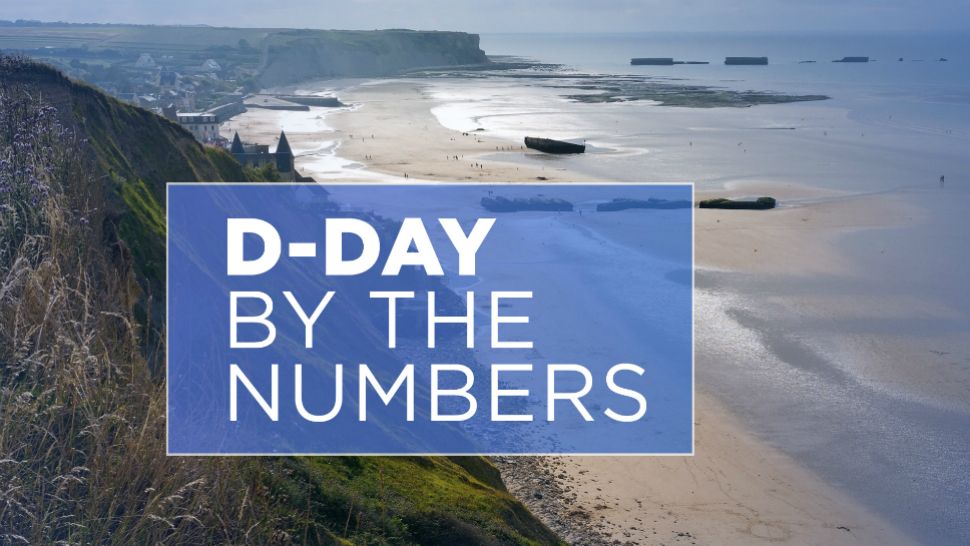TAMPA Fla. — The Allied invasion of Normandy, which began with what we all now recognize as "D-Day," remains the largest air, land and sea invasion in U.S. military history.
- More than 100,000 troops sent to beaches
- LINK: More about D-Day
- RELATED: Passing D-Day memories to children a priority 75 years later
- RELATED: 'Woo-hoo!' At 97, D-Day veteran parachutes into Normandy
"Operation Neptune" was the codename for the initial D-Day Normandy landing operations. Neptune was the first phase of the larger "Operation Overlord," whose goal was the invasion of German-occupied Western Europe.
General Dwight D. Eisenhower, Supreme Commander of Allied Expeditionary Forces, made the decision to go ahead on five naval division landings on the beaches of Normandy, France.
According to the Eisenhower Presidential Library, the landing included 7,000 ships and landing craft with over 195,000 personnel from eight different allied countries.
Just from the United States, Britain and Canada alone, 133,000 troops were sent to the beaches.
The casualties of those three countries or military personnel killed, wounded or missing in action, were more than 10,000 on that day alone.
Thousands of war planes were also involved, dropping more than 24,000 troops from the same countries.
After the successful invasion, more than 850,000 troops eventually landed on Normandy along with almost a combined million tons of supplies and vehicles.
Compared to Operation Desert Storm in the First Gulf War, the Coalition Forces dropped just over 60,000 tons worth of bombs.









